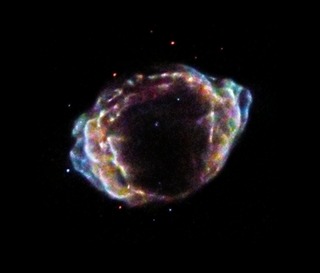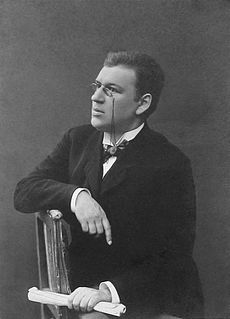This page is based on this
Wikipedia article Text is available under the
CC BY-SA 4.0 license; additional terms may apply.
Images, videos and audio are available under their respective licenses.

The Karl G. Jansky Very Large Array (VLA) is a centimeter-wavelength radio astronomy observatory located in central New Mexico on the Plains of San Agustin, between the towns of Magdalena and Datil, ~40 miles (64 km) west of Socorro. The VLA comprises twenty-seven 25-meter radio telescopes deployed in a Y-shaped array and all the equipment, instrumentation, and computing power to function as an interferometer. Each of the massive telescopes is mounted on double parallel railroad tracks, so the radius and density of the array can be transformed to adjust the balance between its angular resolution and its surface brightness sensitivity. Astronomers using the VLA have made key observations of black holes and protoplanetary disks around young stars, discovered magnetic filaments and traced complex gas motions at the Milky Way's center, probed the Universe's cosmological parameters, and provided new knowledge about the physical mechanisms that produce radio emission.
The Veterinary Laboratories Agency (VLA) was an executive agency of the UK government's Department for Environment, Food and Rural Affairs (DEFRA). It carried out animal disease surveillance, diagnostic services and veterinary scientific research for government and commercial organisations. It was based in New Haw, though had offices and laboratories around the country, such as in Sutton Bonington.
The NRAO VLA Sky Survey (NVSS) was an astronomical survey of the Northern Hemisphere carried out by the Very Large Array (VLA) of the National Radio Astronomy Observatory (NRAO), resulting in an astronomical catalogue. It was led by James J. Condon.

CD49d is an integrin alpha subunit. It makes up half of the α4β1 lymphocyte homing receptor.

Integrin α4β1 is an integrin dimer. It is composed of CD49d and CD29. The alpha 4 subunit is 155 kDa, and the beta 1 subunit is 150 kDa.

Aheloy is a town and seaside resort in Burgas Province, eastern Bulgaria. As of 2006 it has 2,175 inhabitants. It is situated on the Bulgarian Black Sea Coast between the major port of Burgas to the south and the bustling tourist centres Nessebur , Slunchev Bryag and Sveti Vlas to the north.
David del Puerto is a Spanish composer.
Eeke Geertruida van Nes is a retired rower from the Netherlands. She won three Olympic medals, a bronze in the double sculls in 1996, with Irene Eijs, and two silver medals in 2000, in eights and double sculls. Between 1995 and 1999 she won four medals at the world championships.
In computer programming, a variable-length array (VLA), also called variable-sized, runtime-sized, is an array data structure whose length is determined at run time .
In C, the VLA is said to have a variably modified type that depends on a value.

G1.9+0.3 is a supernova remnant (SNR) in the constellation of Sagittarius. It is the youngest known SNR in the Milky Way, resulting from an explosion which occurred some time between 1890 and 1908. The explosion was not seen from Earth as it was obscured by the dense gas and dust of the Galactic Center, where it occurred. The remnant's young age was established by combining data from NASA's Chandra X-ray Observatory and the VLA radio observatory. It was a type Ia supernova. The remnant has a radius of over 1.3 light years.
Barimo massacre refers to the massacre of 26 Bosniaks in Barimo, Višegrad in August 1992 by the Bosnian Serb Army. The victims were mostly women and children. The entire village was burnt down and destroyed, including religious buildings. The eldest victim was Hanka Halilović, born in 1900, and the youngest was Fadila Bajrić, born in 1980.

Vlas Mikhailovich Doroshevich, born April 17, 1864 – died February 22, 1922, was one of Russia's most popular and widely read journalists, and a novelist, essayist, drama critic, and short story writer.
The Virginia Library Association (VLA) is a nonprofit organization whose purpose is "to develop, promote, and improve library and information services, library staff, and the profession of librarianship in order to advance literacy and learning and to ensure access to information in the Commonwealth of Virginia." The VLA is divided into six regions. It maintains the VLA Jobline, a list of jobs available in libraries throughout the Commonwealth of Virginia.

W75N(B)-VLA2 is a massive protostar some 4,200 light-years from Earth, about 8 times more massive and 300 times brighter than our Sun, observed in 1996 and 2014 by the Karl G. Jansky Very Large Array (VLA). In 2014 its stellar wind had changed from a compact spherical form to a larger thermal, ionized elliptical one outlining collimated motion, giving critical insight into the very early stages of the formation of a massive star. Being able to observe its rapid growth as it happens is unique, according to Huib van Langevelde of Leiden University, one of the authors of a study of the object.









